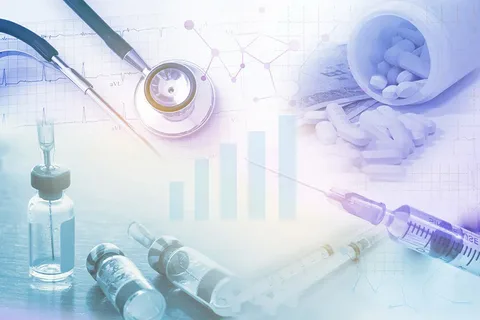Biobetters Market: How Innovative Delivery Systems Are Transforming Treatment Efficacy

Biobetters market is witnessing a remarkable transformation, driven by the emergence of innovative delivery systems that enhance treatment efficacy and patient adherence. As healthcare evolves towards more personalized and effective solutions, the importance of how therapies are administered becomes increasingly evident. Innovative delivery systems not only optimize the therapeutic impact of biobetters but also address challenges related to patient compliance and overall treatment outcomes.
Market Opportunities Driven by Delivery Innovations
The integration of advanced delivery systems into the biobetters market presents a wealth of opportunities for pharmaceutical companies and healthcare providers alike. Here are some key areas where these innovations are making a significant impact:
-
Enhanced Bioavailability: Traditional delivery methods can sometimes limit the bioavailability of biologic therapies, meaning that not enough of the drug reaches the systemic circulation to achieve its intended effect. Innovative delivery systems, such as nanoparticles and liposomes, can enhance bioavailability by protecting the active ingredients and facilitating their absorption. By improving how much of the drug is available for therapeutic action, these systems can significantly increase treatment efficacy.
-
Targeted Delivery: One of the most promising advancements in drug delivery is the ability to target specific tissues or cells. This precision minimizes systemic exposure and reduces potential side effects. For instance, innovations such as antibody-drug conjugates allow for the targeted delivery of biobetters directly to cancer cells. This targeted approach not only enhances the therapeutic effect but also spares healthy cells, leading to better patient outcomes and quality of life.
-
Controlled Release Mechanisms: Innovative delivery systems can provide controlled release of biobetters, ensuring a steady and sustained therapeutic effect over time. This is particularly beneficial for chronic conditions that require continuous medication, as it reduces the need for frequent dosing. Formulations that utilize biodegradable polymers or hydrogels can release the drug in a controlled manner, maintaining optimal drug levels in the bloodstream and improving treatment adherence.
-
User-Friendly Administration: The complexity of some biologic therapies often results in challenges related to patient adherence. Innovative delivery systems, such as pre-filled syringes, autoinjectors, and transdermal patches, simplify administration and empower patients to manage their treatment more effectively. These user-friendly options can significantly enhance patient engagement and adherence, leading to better overall outcomes.
-
Integration with Digital Health Technologies: The rise of digital health technologies offers new avenues for the administration of biobetters. Smart delivery systems that incorporate digital monitoring and feedback mechanisms can provide real-time data on patient compliance and drug efficacy. This integration allows healthcare providers to adjust treatment plans proactively and ensures that patients are receiving the right therapy at the right time.
Challenges and Considerations in Delivery Innovation
While innovative delivery systems hold tremendous potential, several challenges must be addressed to maximize their effectiveness in the biobetters market. Regulatory hurdles can complicate the development and approval of novel delivery methods. Ensuring that these systems meet safety and efficacy standards is paramount.
The Future of Delivery Systems in the Biobetters Market
Looking ahead, the future of innovative delivery systems in the biobetters market appears promising. As technology continues to advance, we can expect to see even more sophisticated methods of drug delivery emerging. Here are a few trends to watch for:
-
Personalized Delivery Systems: As the shift towards personalized medicine accelerates, we will likely see the development of tailored delivery systems that cater to individual patient needs. This could include systems that adjust the release rates of biobetters based on real-time feedback from wearable devices or other monitoring technologies.
-
Sustainable Delivery Solutions: With increasing awareness of environmental issues, there is a growing demand for sustainable and eco-friendly delivery systems. Innovations that minimize waste and utilize biodegradable materials will likely gain traction, aligning with broader sustainability goals in healthcare.
-
Increased Collaboration: As the biobetters market continues to evolve, collaboration among pharmaceutical companies, technology providers, and research institutions will be essential. By pooling resources and expertise, stakeholders can drive innovation in delivery systems and address the challenges that arise in this complex field.
-
Enhanced Regulatory Frameworks: As new delivery technologies emerge, regulatory agencies will need to adapt their frameworks to evaluate these innovations effectively. Continued dialogue between industry stakeholders and regulators will be essential to ensure that new delivery systems can reach the market swiftly while maintaining patient safety.
- Art
- Causes
- Crafts
- Dance
- Drinks
- Film
- Fitness
- Food
- Games
- Gardening
- Health
- Home
- Literature
- Music
- Networking
- Other
- Party
- Religion
- Shopping
- Sports
- Theater
- Wellness


